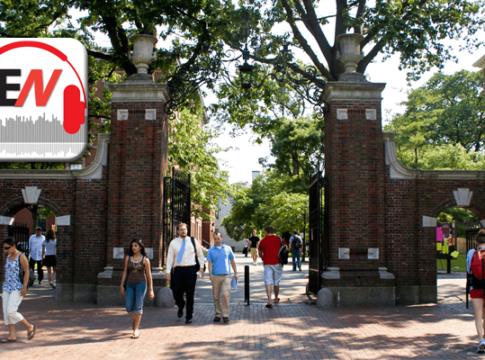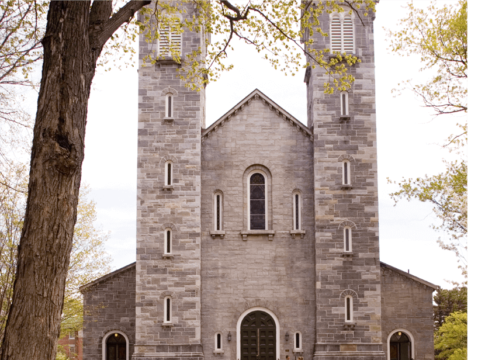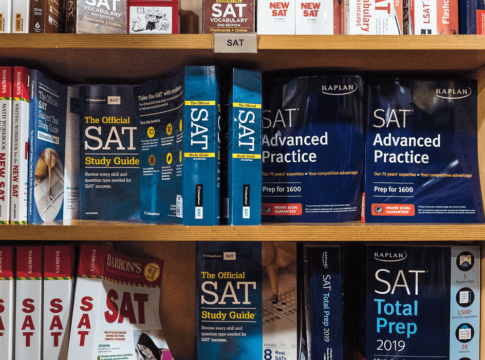
It’s often noted by individuals of a certain age that “I could never get into my alma mater if I were applying today.” The conventional wisdom is that it’s now much harder to be accepted into highly selective colleges and universities than it was a generation ago. But is that true?
To find out, we identified the median SAT scores (math plus verbal) of most of the 100 top national universities and 50 top liberal arts colleges (as determined by the 2020 US News and World Report college rankings) for the incoming freshmen classes of 1985 and 2016. The 1985 data came from the 1986 edition of Barron’s Profiles of American Colleges, tracked down at the Library of Congress. The 2016 data were found in the 2018 edition of Barron’s Profiles of American Colleges. Since the SAT was re-normed in 1995 (and again in 2016, but after the time period for our data), we used a concordance table published by the College Board to adjust the 1985 scores accordingly. Of the 150 institutions examined, median SAT scores were available in both years for 95 of them.
We used SAT scores as our measure of selectivity rather than acceptance rates because those rates have plummeted for most institutions in recent years, due to changes in the application process itself. For example, the “common app” makes it relatively easy and affordable for students to apply to larger numbers of schools. More and more students, particularly those gunning for the big-name institutions, are doing so. Given that the college rankings lists give a lot of weight to rejection rates, colleges face strong incentives to push those rates as high as possible by doing things such as generating large numbers of applications from students unlikely to be accepted, much less attend. In contrast, median SAT scores—appropriately adjusted—give us a better measure of the academic quality of an institution’s freshman class.
To be sure, they aren’t perfect. They don’t, for example, account for the many students who took and submitted ACT scores over this time period. The scores themselves can be inflated by test prep—which can give an advantage to more affluent students—or by various machinations of the colleges, such as encouraging otherwise well qualified applicants with lower test scores to show up for the spring semester of freshman year rather than in the fall. The schools in our sample look at much more than test scores, so “selectivity” goes far beyond the SAT. All that said, they do tell us something about the difficulty of getting into a given college today versus a generation ago.
What did we learn? For once, the conventional wisdom has it about right. With just a few exceptions, median SAT scores for the most selective institutions have risen significantly over the past generation, meaning, by that measure, it really is harder to get into such schools today than thirty years ago.
Among the institutions in our sample, the average median SAT score for the incoming freshman class increased by 93 points, to 1309 from 1216.
Fourteen institutions saw increases of 150 points or more:
• Elon College, to 1192 from 952, an increase of 240 points
• University of Chicago, to 1520 from 1331, an increase of 189 points
• Ohio State, to 1280 from 1100, an increase of 180 points
• Pitzer College, to 1293 from 1116, an increase of 177 points
• UCLA, to 1320 from 1143, an increase of 177 points
• UC-San Diego, to 1337 from 1160, an increase of 177 points
• Boston College, to 1360 from 1190, an increase of 170 points
• SUNY at Stony Brook, to 1290 from 1120, an increase of 170 points
• University of Pittsburgh, to 1280 from 1112, an increase of 168 points
• Georgia Tech, to 1410 from 1243, an increase of 167 points
• Case Western, to 1410 from 1247, an increase of 163 points
• Brown University, to 1490 from 1335, an increase of 155 points
• UNC-Chapel Hill, to 1263 from 1110, an increase of 153 points
• Notre Dame, to 1440 from 1290, an increase of 150 points
(View these data for all institutions in our sample here.)
Another way to understand this shift is hold median SAT scores constant, instead of holding institutions constant. For example:
• NYU’s median SAT scores today are roughly the same as Columbia’s median SAT scores a generation ago
• Georgia Tech and Case Western have median SAT scores today that are roughly the same as Yale’s a generation ago
• Tulane’s median SAT scores today are one point higher than Duke’s a generation ago
Other SAT score “twins” include:
• UC-San Diego (today) and Georgetown (then)
• University of Richmond (today) and Carleton College (then)
• University of Miami (today) and Northwestern (then)
• UNC-Chapel Hill (today) and Notre Dame (then)
• SUNY at Stony Brook (today) and Middlebury College (then)
• Virginia Tech (today) and Wake Forest (then)
• Penn State (today) and Boston College (then)
(View more “twins” here.)
What might explain these trends?
First, the U.S. population has increased almost 50 percent over this time. But places like Yale aren’t admitting 50 percent more students than they were in 1980. Plus, there are more international students fighting for these slots as well.
Second, America is a richer and better-educated country than it was a generation ago. The upper-middle-class and above has grown significantly as a share of the population, and these are the families most likely to aspire to highly selective institutions for their children. And given the cost of attending these top-tier schools, they are also the families who can most afford them.
Third, as Caroline Hoxby found in a 2009 study, much of this stems from the increased mobility of America’s top students. Simply put, students with high SAT scores are more likely to travel to highly selective institutions than they were in the past, when a large proportion of high-scoring youngsters would have stayed close to home and attended less selective regional colleges and universities. As a result, such students are self-sorting into fewer, and more selective, schools.
So what are the implications?
First, parents and students should keep these trends in mind, especially if they get bad news from the admissions offices of highly selective colleges and universities. It really is harder to get into a good school today, and families should set their expectations accordingly. (Even if junior is every bit as smart and hardworking as dad, his beloved alma mater may be out of reach.)
Second, to the extent that employers use college selectivity as an indication of applicant quality (not that they should, but many do), they need to increase their list of colleges and universities by which they are impressed. For example, if they used to recruit from Duke, they should start recruiting from Tulane as well. (The same might apply to singles who are “shopping” for a partner from a prestigious school!)
Finally, if there’s anything the current Covid-19 crisis is teaching us, it’s that we should keep everything in perspective. Even if students get disappointing news in their in-boxes in the weeks ahead, they and their families should remember that America is blessed with hundreds of world-class colleges and universities. Now let’s hope that they can open their doors again come September.
Michael J. Petrilli is an executive editor of Education Next and president of the Thomas B. Fordham Institute, where Pedro Enamorado is a production and staff assistant. Special thanks to interns Aniya Mendoza, Alice Tsai, and Trinady Maddock for their assistance with data entry and analysis.
Read more from Education Next on coronavirus and Covid-19.





